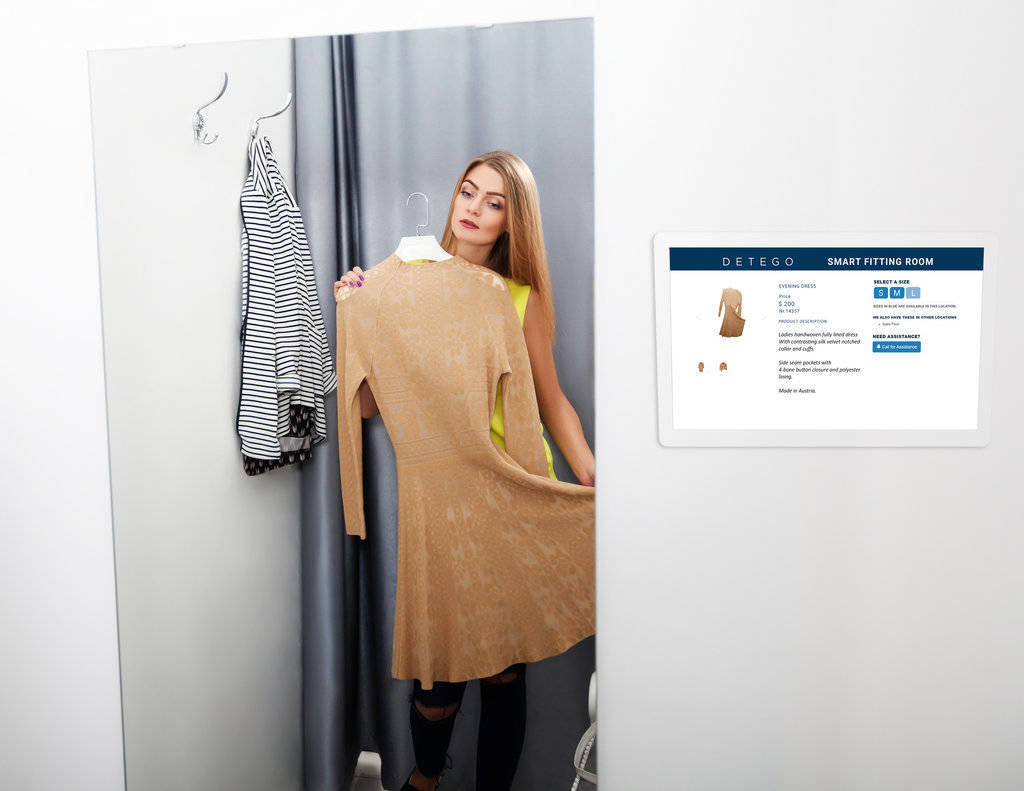Customers drive retail strategies with their various and versatile demands. They want the ability to shop anytime, anywhere while expecting a consistent brand experience in the store, on the web and using mobile apps. Customers anticipate immediate access on an article’s availability across all channels – and fast delivery! Failure means losing a customer to a competitor. They’re only a click away. Meeting these expectations requires a digital transformation of the stores and efficient omni-channel retailing. But how to implement these strategies successfully? With an intelligent business base.
How does the store change through omni-channel technologies?
Stores have always appealed to the senses, particularly for “seeing” and “touching”. These sensory experiences are now enhanced by interactive, digital touchpoints (e.g. via the virtual endless shelf) which enable us to browse through a complete assortment, to get online recommendations in the fitting room, or to have the possibility of returning online purchased items to a store.
But what does the introduction of mobile, digital signage and IoT mean for the set up of stores and for staff?
These technologies offer a great opportunity for the perfect interplay between product presentation, personal advice and the customer´s desire for self-service, which makes it easier to offer a customer journey that fits well with the brand’s promise. Let´s consider an example: A customer checks the availability of a skirt in a particular size and color via her smartphone before entering a store. When she visits the store, her smartphone shows a 360 degree presentation of her desired article on digital signage. Recommendations of matching items are presented too and she takes them to the fitting room. The “smart fitting room” recognises the articles via IoT technology and encourages her to browse through the complete assortment on an interactive screen. Other sizes, variants or accessories are shown and a sales assistant can be alerted through a wearable device to bring desired articles to the fitting room. IoT facilitates a new way of sales dialogue and service.

What kind of technologies are already out there and which ones are coming soon? What benefits do they offer?
Splitting the store into zones to automatically capture merchandise movements via ceiling readers is already here, as is the analysis of real-time data to optimise the presentation of merchandise and fulfill in-store KPIs. Smart fitting rooms, as an essential link to other omni-channel services, are already being used by some innovative retailers. More exact planning tools are underway and predictive analytics is the future.
Will customers do everything themselves via their smartphones and will there no longer be any store staff in future?
No, but store staff will need to adapt to a new role. Their job and sales advice will be digitally supported. For example, click & collect article reservations will be done via a tablet. Customers will be able to act in an independent manner using their smartphone e.g. to check article availability in real time. If the customer wants sales advice, though, store staff will be there for service and support.
Image sources: Fotolia; Copyright: zhudifeng / AdobeStock; Copyright: Nomad_Soul
The implementation of an omni-channel strategy is a major undertaking. Regardless of whether your company is just at the starting point, in the middle of the project implementation, or already in a more advanced stage, if the foundation for omni-channel retailing is not well laid, the project is doomed to fail. This whitepaper provides 5-basics-checks for the fundamentals of efficient omni-channel retailing. It helps to build a solid foundation for a successful implementation of omni-channel retailing – regardless of the stage your company has already reached in the realisation of its omni-channel strategy. It is aimed to reach practitioners responsible for the omni-channel initiative and therefore those with clear expectations on the cost-benefit aspects of any omni-channel investment. It provides C-levels, Omni-channel-, eCommerce- and Marketing Executives with reflective and feasible recommendations for actions to take for more efficient omni-channel retailing. The Whitepaper focuses on the following omni-channel-services, expected by consumers: availability checks, click & collect, ship-from-store, return-to-store and instore-ordering.
